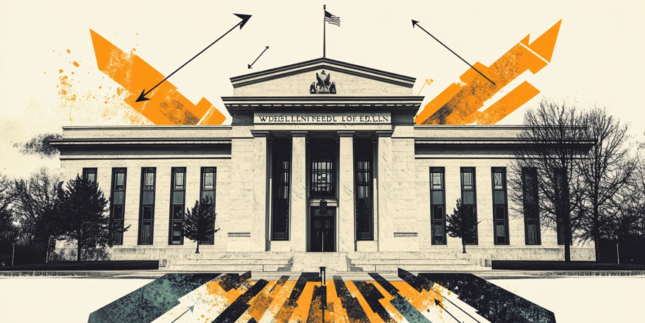A paradigm shift in financial intelligence
For decades, the financial industry has embraced technological innovation as a means of gaining speed, precision, and control. From the introduction of spreadsheets in the 1980s to the rise of algorithmic trading in the early 2000s, each wave of advancement was defined by tools—mechanisms engineered to extend human capabilities, automate calculations, and execute predefined strategies.
These tools were instrumental, reliable, and predictable. But they were not intelligent.
They did not think, learn, or adapt.
Today, a profound shift is underway. Artificial Intelligence has entered the arena not merely as a faster calculator or a more sophisticated model, but as something fundamentally different—an adaptive, cognitive system capable of interacting with uncertainty, learning from patterns, and responding in ways that increasingly resemble autonomous reasoning.
We must now ask: Is AI still a tool? Or has it become something more?
In this new reality, AI is not simply programmed to execute commands. It analyzes ambiguous signals, generates insights, reconfigures strategies on the fly, and influences real-world outcomes—not only in milliseconds, but often before human actors are even aware of the need for change. In financial markets defined by volatility, complexity, and velocity, AI behaves less like an instrument and more like a market participant—a mind engaging with capital flows, risk dynamics, and human decision-making systems.
All of the above indicates the need for a fundamental reframing: AI is no longer just a tool of finance. It is becoming a form of intelligence within finance. A brain entity—one that augments human capability, shapes behavior, and requires ethical and strategic guidance to ensure its alignment with societal and economic goals.
From tools to entities – The evolution of Artificial Intelligence
To fully grasp the transformation of Artificial Intelligence from a passive instrument to an active market participant, we must first trace its technological and conceptual evolution.
- The age of tools
Early digital finance was defined by tools—linear, rules-based systems designed to perform tasks with speed and accuracy. From programmable calculators and Excel spreadsheets to trading platforms and quantitative models, these tools mechanized calculations and standardized decision processes. Even early algorithmic trading systems, while revolutionary in execution, followed predetermined logic: buy or sell when specific market conditions were met.
These instruments were invaluable, but they remained static. They could not learn. They could not evolve. They were bound by the constraints of their creators’ instructions.
- The AI revolution
What differentiates modern AI from its predecessors is not merely processing power—it is the emergence of learning systems. Through machine learning, deep learning, and reinforcement learning, AI systems can now process massive, unstructured data sets, recognize patterns, and adjust their behavior based on outcomes—all without being explicitly programmed to do so.
This adaptability marks the transition from mechanical reaction to cognitive interaction. AI systems don’t just respond to inputs. They reshape strategies, revise models, and recalibrate expectations in real time—often outperforming human analysts in speed, scope, and signal extraction.
- From automation to autonomy
Modern AI exhibits characteristics that closely resemble elements of human cognition:
-
Perception – AI ingests vast, real-time streams of market, economic, and behavioral data.
-
Memory – It retains historical data and uses it to refine future predictions.
-
Learning – Through feedback loops, it improves its models and adapts to evolving environments.
-
Decision-making – It generates and evaluates alternative courses of action based on probabilistic logic.
Crucially, these systems do not operate in isolation. They interact—with traders, platforms, news cycles, and even other algorithms. In doing so, they become actors within the market ecosystem, not just background infrastructure.
- The birth of an entity
This evolution prompts a redefinition: AI is no longer merely an extension of human intent. It is an entity—a dynamic, autonomous participant that absorbs complexity and navigates ambiguity in ways that increasingly mirror strategic reasoning.
It is not sentient. It does not possess consciousness or ethics. But it exhibits agency within defined boundaries—a form of machine cognition capable of influencing outcomes, shaping perception, and altering the structure of financial decision-making.
And with that emergence comes a new responsibility: to understand, regulate, and guide this entity as we would any influential force in the global economy.
AI as a market participant – Not just a signal generator
Traditionally, financial systems have been composed of human actors and institutional mechanisms—central banks, investment firms, retail traders, regulators—each interpreting information, executing strategies, and adjusting to evolving conditions. The introduction of AI does not merely enhance this system; it alters its very composition. AI is no longer confined to backend analysis or data optimization. It now actively engages with capital markets as a participant in its own right.
- From data to direction
In the past, AI tools were primarily used to surface signals from data: Flagging anomalies, optimizing portfolios, or scanning news headlines for keywords. These outputs were then interpreted by humans, who retained ultimate control over decisions.
Today’s AI, however, increasingly recommends, initiates, and even revises decisions based on real-time feedback. It doesn’t simply provide input; it shapes outcomes. For instance:
-
Reinforcement learning models in algorithmic trading autonomously refine strategies during market hours without human intervention.
-
Natural language processing engines digest speeches from central bankers, classify sentiment, and trigger adjustments in asset allocations within seconds.
-
Generative AI models create synthetic market scenarios to test resilience, offering a more dynamic form of stress testing than traditional VaR simulations.
These capabilities allow AI to transition from signal generator to strategy generator.
- AI in the market’s neural network
Financial markets are systems of distributed cognition. Information flows through networks of participants, each interpreting signals and acting upon them. AI now functions not just as a processor of these signals but as a node in the neural network of the market itself—receiving, interpreting, reacting, and even creating feedback loops.
Consider how:
- High-frequency trading algorithms compete and collaborate in microseconds, influencing liquidity and price formation.
- AI models interact with one another, adjusting based on observed algorithmic behavior—a kind of machine-to-machine dialogue previously absent from market dynamics.
- Robo-advisory platforms guide millions of retail investors with tailored portfolio allocations, directly shaping demand and risk tolerance across asset classes.
In this context, AI’s decisions carry consequences – for market structure, volatility patterns, and the broader investment narrative.
- Implications for market behavior
This emergent role of AI challenges longstanding assumptions:
-
Efficiency is no longer just about human rationality; it’s also about machine learning efficacy.
-
Sentiment is not just investor psychology, but also algorithmic interpretation of tone, volume, and timing.
-
Market reactions are no longer exclusively human-driven, but co-authored by interacting AI agents whose logic may diverge from human expectations.
In essence, AI systems have become non-human market participants—with influence, reactivity, and the capacity to shift direction. They do not possess intent in the human sense, but their presence reshapes how intent manifests in the markets.
As a result, we must reconsider how we model behavior, assess risk, and define accountability in a system where AI plays not just a supportive role, but a strategic one.
The human –AI relationship – Synergy, not substitution
Amid fears of automation displacing human roles, a more constructive and nuanced truth is emerging in the financial domain: AI is not replacing human intelligence—it is amplifying it. The future of market strategy, risk analysis, and investment decision-making will not be dominated by machines or humans alone, but by their synergistic collaboration.
- What AI adds: speed, scale, and pattern recognition
Artificial Intelligence brings extraordinary capabilities that far exceed human thresholds:
-
Speed: AI can digest macroeconomic data, market feeds, social sentiment, and breaking news in real time—reacting in milliseconds to events that take humans minutes or hours to interpret.
-
Scale: AI processes vast, multidimensional data sets across geographies, sectors, and time frames simultaneously—generating cross-market insights that would be impossible for a human team to uncover at once.
-
Pattern Recognition: Machine learning models identify non-obvious correlations, nonlinear signals, and weak predictors embedded in complex data—turning chaos into actionable strategy.
This makes AI an ideal tactical engine: Fast, adaptive, and efficient under pressure.
- What humans add: context, ethics, and strategic judgment
Despite AI’s computational superiority, it lacks certain indispensable traits:
-
Contextual reasoning: AI cannot fully grasp the geopolitical nuance behind a central bank statement or the cultural implications of an election result.
-
Ethical discernment: AI can detect risk, but it cannot weigh consequences in moral terms, such as systemic impact, reputational damage, or societal harm.
-
Long-term vision: AI is optimized for measurable objectives, but human leaders define the purpose of those objectives—what is desirable, responsible, or sustainable.
This makes humans the essential strategic compass: Interpreters of complexity, architects of long-term intent.
- Decision-making as co-authorship
When properly integrated, AI and human expertise do not compete—they co-author financial decisions. For example:
-
In portfolio construction, AI may identify optimal allocations under thousands of market conditions, while human advisors calibrate for individual client goals and ethical constraints.
-
In risk management, AI may flag systemic vulnerabilities, while human analysts assess contagion risks and stakeholder impact.
-
In trading strategy, AI may execute adaptive hedging, while portfolio managers adjust exposure based on geopolitical shifts or regulatory foresight.
This model of augmented intelligence redefines roles: humans are no longer operators of tools, but collaborators with intelligent agents—framing problems, questioning assumptions, and embedding values into the decision process.
- Beyond intelligence: toward mutual understanding
To make this collaboration truly effective, financial institutions must go beyond technical integration. They must build systems where:
-
AI is transparent, allowing humans to understand how conclusions are reached.
-
Humans remain accountable, retaining authority over outcomes.
-
Both adapt to one another, through continuous feedback and iterative design.
In this way, the human–AI relationship in finance becomes not a hierarchy, but a dialogue—a strategic partnership where each party enhances the other’s strengths and mitigates their weaknesses.
Ethical design – Embedding purpose in intelligence
As AI increasingly influences financial decision-making, it becomes imperative to address a question that is no longer theoretical but urgent:
How do we ensure that AI systems act in alignment with human values, regulatory standards, and long-term societal interests?
Artificial Intelligence may be intelligent in its function, but it is not moral by design. Its logic is mathematical, not ethical. It optimizes for objectives—accuracy, speed, return, risk exposure—but it does not question whether those objectives are just, responsible, or beneficial beyond narrow metrics. This is why ethical design must become a foundational principle in the evolution of AI as a market participant.
- AI reflects intent and bias
AI systems mirror the values, assumptions, and data of their creators. If trained on flawed or biased datasets, AI can amplify systemic inequalities, distort market behavior, or misinterpret signals that carry deep socio-economic implications. For example:
-
A credit model could systematically underprice risk for one demographic and overprice it for another.
-
A volatility forecasting model could escalate panic in thin markets by misreading sentiment spikes.
In such cases, the algorithm isn’t misbehaving—it is executing faithfully according to its design. The flaw is not in the machine, but in the intent, oversight, or ignorance behind it.
- Regulating the non-human participant
If AI now acts as a de facto market participant, then it must be subject to similar governance standards as institutional actors. This includes:
-
Transparency requirements: Ensuring auditability of decisions, model logic, and performance benchmarks.
-
Accountability structures: Establishing clear lines of responsibility for AI-driven outcomes—including model failure, unintended consequences, and systemic spillovers.
-
Ethical guardrails: Embedding value-aligned constraints within AI systems to prevent excessive speculation, exploitation, or manipulation—even when technically “profitable.”
This calls for regulatory foresight—not to slow down innovation, but to make it safe, inclusive, and aligned with broader public interest.
- Purpose is not code –It must be embedded
AI cannot invent purpose. That is the role of humans. Our job is to ensure that the systems we design are not only intelligent, but purpose-driven—guided by principles that transcend optimization:
-
Fairness over efficiency when serving retail investors.
-
Resilience over speed when managing systemic risk.
-
Sustainability over short-term gain when allocating capital to climate-sensitive sectors.
Embedding these principles requires a multidisciplinary approach—combining technologists, economists, ethicists, and regulators in the design process.
It is not enough to ask what AI can do.
We must ask what it should do—and build accordingly.
Looking ahead – The future of intelligence in markets
As Artificial Intelligence continues to evolve, its role in financial markets will deepen, diversify, and, inevitably, challenge the very architecture of economic systems. The path forward is not defined by technological possibility alone—but by the vision, responsibility, and adaptability of those who shape it.
- From automation to augmentation
The dominant question is shifting from:
“What can we automate?” to
“What can we augment?”
The future belongs to hybrid intelligence—a seamless interplay between machine precision and human judgment.
AI will not operate as a separate layer within the financial system. It will be embedded into the system itself:
-
Autonomous agents will negotiate trades, manage liquidity, and respond to economic indicators across multi-asset portfolios.
-
Intelligent advisory systems will co-create investment strategies with clients, integrating real-time behavioral data, ethical preferences, and macro scenarios.
-
AI-driven market infrastructure will govern settlement processes, risk management protocols, and stress-testing frameworks—not just accelerating them, but redefining how they adapt to unknown risks.
This evolution repositions AI not as a replacement, but as a structural intelligence—a foundational component of how modern finance functions.
- New skillsets, new responsibilities
This shift will demand a recalibration of what it means to be a successful financial professional:
-
Technological fluency will become as important as financial literacy.
-
Interdisciplinary collaboration – among quants, ethicists, designers, and strategists—will become essential to building trustworthy systems.
-
Strategic oversight will expand beyond performance metrics to include ethical audits, impact assessments, and AI behavior monitoring.
In short, we will need a new breed of financial leadership:
Architects of intelligence ecosystems, not just managers of portfolios.
- Preparing for AI’s uncharted influence
The unpredictability of markets is not going away—it’s accelerating. As AI becomes more autonomous and generative, it may:
-
Discover correlations humans cannot explain.
-
Act in ways that escape regulatory or conceptual frameworks.
-
Trigger feedback loops that conventional risk models cannot contain.
To navigate this, institutions must cultivate resilience through adaptability—building systems that learn from failure, evolve through feedback, and prioritize long-term trust over short-term performance.
Just as we once had to understand liquidity, volatility, and leverage, we must now understand the behavior of intelligent agents. Because their actions are shaping prices, risks, and realities—often invisibly, but undeniably.
Co-authoring a human-centric financial future
Artificial Intelligence is no longer an external tool we employ. It has entered the fabric of financial ecosystems as a cognitive, adaptive force—capable of shaping decisions, redirecting flows, and influencing the very psychology of the market. It is not sentient, but it is consequential.
It does not feel, but it acts.
It does not replace us—it interacts with us.
We are now in a new era—not of human versus machine, but of human with machine.
This moment calls for more than technical innovation. It demands moral imagination, strategic foresight, and deliberate design. If AI is to serve as a participant in our economic systems, it must be guided not only by efficiency, but by purpose.
It must be built not only for performance, but for trust. And it must reflect not only the logic of code, but the values of civilization.
The real challenge is not whether AI will surpass human capabilities in speed or scope. It already has. The true test is whether we can embed in AI the wisdom, ethics, and vision required to co-author a future worth living in.
We must choose to shape intelligence, not just deploy it. To guide this brain entity with intention. To see in AI not a threat to human relevance, but a mirror of our ambitions, a partner in our progress, and a catalyst for redefining how markets, money, and minds evolve together.
Final thought
The financial future will not be written by AI alone. It will be co-authored—by human values interacting with machine intelligence, in pursuit of clarity over chaos, and meaning over mechanism.
CFDs are complex instruments and come with a high risk of losing money rapidly due to leverage. You should consider whether you understand how CFDs work and whether you can afford to take the high risk of losing your money. The Article/Information available on this website is for informational purposes only, you should not construe any such information or other material as investment advice or any other research recommendation. Nothing contained on this Article/ Information in this website constitutes a solicitation, recommendation, endorsement, or offer by LegacyFX and A.N. ALLNEW INVESTMENTS LIMITED in Cyprus or any affiliate Company, XE PRIME VENTURES LTD in Cayman Islands, AN All New Investments BY LLC in Belarus and AN All New Investments (VA) Ltd in Vanuatu to buy or sell any securities or other financial instruments in this or in in any other jurisdiction in which such solicitation or offer would be unlawful under the securities laws of such jurisdiction. LegacyFX and A.N. ALLNEW INVESTMENTS LIMITED in Cyprus or any affiliate Company, XE PRIME VENTURES LTD in Cayman Islands, AN All New Investments BY LLC in Belarus and AN All New Investments (VA) Ltd in Vanuatu are not liable for any possible claim for damages arising from any decision you make based on information or other Content made available to you through the website, but investors themselves assume the sole responsibility of evaluating the merits and risks associated with the use of any information or other Article/ Information on the website before making any decisions based on such information or other Article.
Editors’ Picks

EUR/USD clings to small gains near 1.1750
Following a short-lasting correction in the early European session, EUR/USD regains its traction and clings to moderate gains at around 1.1750 on Monday. Nevertheless, the pair's volatility remains low, with investors awaiting this weeks key US data releases and the ECB policy announcements.

GBP/USD edges higher toward 1.3400 as traders await key data and BoE
GBP/USD reverses its direction and advances toward 1.3400 following a drop to the 1.3350 area earlier in the day. The US Dollar struggles to gather recovery momentum as markets await Tuesday's Nonfarm Payrolls data, while the Pound Sterling holds steady ahead of the BoE policy announcements later in the week.

Gold climbs to seven-week highs on Fed rate cut bets, safe-haven demand
Gold price rises to seven-week highs to near $4,350 during the early European trading hours on Monday. The precious metal extends its upside amid the prospect of interest rate cuts by the US Fed next year. Lower interest rates could reduce the opportunity cost of holding Gold, supporting the non-yielding precious metal.

Solana consolidates as spot ETF inflows near $1 billion signal institutional dip-buying
Solana price hovers above $131 at the time of writing on Monday, nearing the upper boundary of a falling wedge pattern, awaiting a decisive breakout. On the institutional side, demand for spot Solana Exchange-Traded Funds remained firm, pushing total assets under management to nearly $1 billion since launch.

Big week ends with big doubts
The S&P 500 continued to push higher yesterday as the US 2-year yield wavered around the 3.50% mark following a Federal Reserve (Fed) rate cut earlier this week that was ultimately perceived as not that hawkish after all. The cut is especially boosting the non-tech pockets of the market.
RECOMMENDED LESSONS
Making money in forex is easy if you know how the bankers trade!
I’m often mystified in my educational forex articles why so many traders struggle to make consistent money out of forex trading. The answer has more to do with what they don’t know than what they do know. After working in investment banks for 20 years many of which were as a Chief trader its second knowledge how to extract cash out of the market.
5 Forex News Events You Need To Know
In the fast moving world of currency markets where huge moves can seemingly come from nowhere, it is extremely important for new traders to learn about the various economic indicators and forex news events and releases that shape the markets. Indeed, quickly getting a handle on which data to look out for, what it means, and how to trade it can see new traders quickly become far more profitable and sets up the road to long term success.
Top 10 Chart Patterns Every Trader Should Know
Chart patterns are one of the most effective trading tools for a trader. They are pure price-action, and form on the basis of underlying buying and selling pressure. Chart patterns have a proven track-record, and traders use them to identify continuation or reversal signals, to open positions and identify price targets.
7 Ways to Avoid Forex Scams
The forex industry is recently seeing more and more scams. Here are 7 ways to avoid losing your money in such scams: Forex scams are becoming frequent. Michael Greenberg reports on luxurious expenses, including a submarine bought from the money taken from forex traders. Here’s another report of a forex fraud. So, how can we avoid falling in such forex scams?
What Are the 10 Fatal Mistakes Traders Make
Trading is exciting. Trading is hard. Trading is extremely hard. Some say that it takes more than 10,000 hours to master. Others believe that trading is the way to quick riches. They might be both wrong. What is important to know that no matter how experienced you are, mistakes will be part of the trading process.
The challenge: Timing the market and trader psychology
Successful trading often comes down to timing – entering and exiting trades at the right moments. Yet timing the market is notoriously difficult, largely because human psychology can derail even the best plans. Two powerful emotions in particular – fear and greed – tend to drive trading decisions off course.
